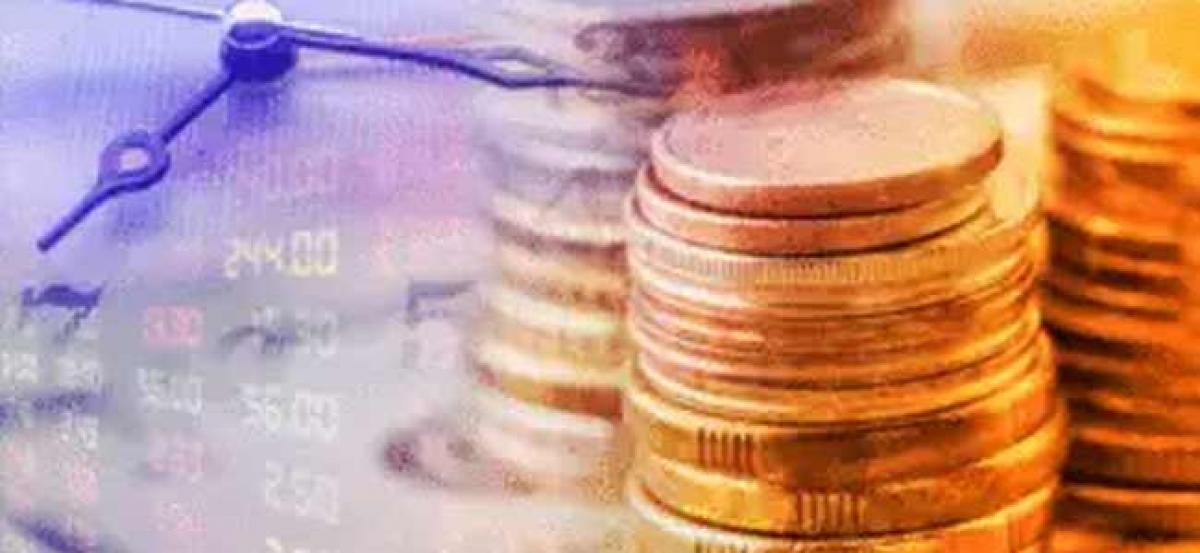Live
- 659 Indian Bison enumerated at Debrigarh
- Adding zing to electioneering
- Hyderabad Comic Con 2024 Concludes
- Maha battle fluid: All keep their fingers crossed
- Five PHC staff placed under suspension
- New TTD Trust Board to meet in Tirumala today
- Drone survey held for laying smart roads
- MyVoice: Views of our readers 18th November 2024
- It’s time to defeat betrayers: Revanth in Maharashtra
- Committees formed, assigned tasks
Just In

Latest official numbers paint a mixed picture of India\'s economy as factory output hit a 25-month high in November 2017 even as higher food and fuel prices along with
Latest official numbers paint a mixed picture of India's economy as factory output hit a 25-month high in November 2017 even as higher food and fuel prices along with rising wages pushed India's retail inflation to a 17-month high in December, breaching the central bank's medium-term target of 4 per cent for the second straight month. This cuts a case for the Reserve Bank of India to raise policy rates, especially given the upcoming pre-election budget.
Consumer price inflation accelerated to 5.2 in December over the same month last year, according to data released by the Central Statistics Office. It is being driven by higher inflation in eggs and vegetables prices at 9.48 per cent and 29.13 per cent, respectively. Prices of pulses fell 23.5 per cent year-on-year, softening for the thirteenth straight month. Fuel and food inflation stood at 7.9 per cent compared to 7.92 per cent in November. Housing inflation stood at 8.25 per cent compared to 7.36 per cent in November. Prices of clothing and footwear went up 4.8 per cent over last year. Acceleration in retail inflation, amid a surge in oil prices, has increased the odds that borrowing costs will rise sooner than expected.
The RBI held its policy rate steady at 6 per cent last month and said all possibilities were on the table, depending on how price pressures and growth panned out. Though the RBI has a medium-term inflation target of 4 per cent and has raised its inflation estimate to 4.3 per cent to 4.7 per cent for the six months through March, some analysts feel inflation could overshoot its estimates. This is causing worry to the Prime Minister Narendra Modi ahead of his last full-year budget due on February 1, as he hopes to win a second term in 2019.
Also, the rise in inflation is unlikely to translate into higher wages, given subdued demand for jobs in an economy which is forecast to grow at its lowest pace in four years. While overall salary increases in India will out-pace the rest of Asia-Pacific in 2018, if adjusted for inflation the raise will be much smaller and in fact lower than last year. While India's overall employment outlook for January-March has improved since the twin policy shocks of demonetization and the Goods and Services Tax (GST), most sectors are still weaker from the same period a year earlier. A relative lack of job opportunities is also being reflected in educational loans, where bad-debt is rising.
In December, the so-called non-performing assets were 7.7 per cent of total advances in the sector for the year through March 2017 – the highest in at least three years. After three good and lucky years, India's economy is back to confronting a rude crude with Brent crude prices now teasing the $70 per barrel mark. Over the past three and a half years, the NDA government has shown admirable discipline in reining in the fiscal deficit. But fiscal morality goes out of the window in an election year, hence the Government spending is likely to be on a higher side this year.

© 2024 Hyderabad Media House Limited/The Hans India. All rights reserved. Powered by hocalwire.com







